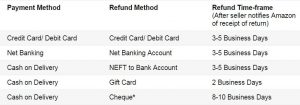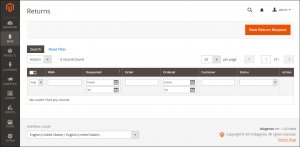Return Merchandise Authorization (RMA) is one of the most important areas of e-commerce solutions that cannot be ignored. In addition to the fact that the established return & refund policies help to complete the purchase process, users who have received excellent service upon return are 92% more likely to buy in this store again.
Previously, we talked about how to organize refund policies to ensure the best customer experience during the returning process. In this article, we tell about existing methods of refund, and which of the methods is the most optimal. If a merchant does not know how to organize the process correctly, he can fall into the trap of dissatisfied customers, financial losses due to payment of commissions, and also lose the reputation in front of a partner bank.
Refund policies are part of RMA which means compensation for customers because of dissatisfaction with the goods. The main reasons for the return of goods mentioned by one of the e-commerce solutions providers are the too small size of item (30%), too large (22%), changed my mind (12%), style (8%), not as described (5%), defective (5%), other or not specified (18%).
Refunds involve a list of complex procedures to the customer’s account. You can implement this compensation in two ways:
- Refund
- Chargeback
A chargeback is a process of returning funds to the buyer’s account from the seller’s account if enough evidence has been presented by the buyer to consider this transaction invalid or fraudulent. If the buyer discovers fraudulent charges from the card, he files a complaint with the bank. The bank investigates and decides to return the funds if it considers that the buyer was cheated or the transaction was fraudulent.
In the case of a chargeback, the seller loses the sold goods or service, payment funds, the commission, the currency conversion fee, as well as the penalty paid by the seller to the bank in case of each chargeback. The chargeback directly influences the reliability of merchants in the bank. The more chargebacks – the lower the seller’s reputation. Therefore, all sellers strive to resolve issues with the buyer in the least difficult way.
A refund is a money transition from the seller’s account to the buyer’s account, which is initiated by the seller himself. In this case, the bank or processing does not participate in the settlement of disputes between the seller and the buyer. The seller decides to make a refund, so he does not pay fines to the bank. He loses only the commission for the transfer and conversion.
Obviously, the merchant wants to solve the issues of return with customers directly. This a part of customer loyalty politics.
Everyone is eager to ensure the satisfaction of the customer. Therefore, the seller seeks to solve the client’s request in the most advantageous way, while fully satisfying the client. The most popular ways to compensate for the damage in 2019 are:
- Payment method: 64%
- Exchanges: 18%
- Gift card: 18%
While organizing the return process, remember that customer-friendly return and refund policies can be a sure-fire way to make your customers happy. Amazon created exemplary refund policies.

As we see, each method has its own reimbursement period. The shortest period refers to the most profitable option for the merchant. But at the same time, Amazon solves customer requests faster, while leaving only a positive impression.
In approximately 65% of cases, users return goods for an obvious and real reason. Therefore, the seller should have a turnkey solution for dealing with such cases. Ecommerce platform Magento 2 provides the best solution to the issue with RMA. Here merchants can configure a lot of mechanisms for forming the rules for returning goods.
Magento takes a practical approach to returns, allowing you to accept part of a return in a way of “Splitting”. This means, if a customer returns two products at once, you can accept one product, but deny the return of the other product. RMA makes it possible to select and configure such functionality that will help you choose different ways of refunds. For example, the customer might choose “Store Credit” instead of a straight refund.
Return Merchandise Authorization (RMA) is important if you wish to build strong relationships with your store customers and win their trust and loyalty. From a technical point of view, an extension for Magento 2 gives such opportunities:
- Let customers create return/exchange requests quickly and easily for online/offline orders
- Reduce the load on your managers
- Manage an intuitive and step-by-step frontend interface
- Support of guests and registered customers RMA
- Create RMA from the backend
- Add own RMA statuses, reasons, resolutions
- Analyze RMAs with powerful reports
